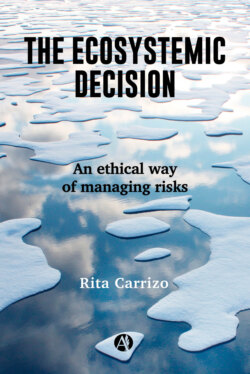Читать книгу The Ecosystemic Decision - Rita Carrizo - Страница 11
На сайте Литреса книга снята с продажи.
1.3 The decision-maker in the light of the systemic approach
ОглавлениеThe reflection up to this point triggers a question: why was not everything abandoned when the undesirable consequences of some decisions began to be evident? Apparently, the change from hunter-gatherers to sedentary agriculture did not bring an improvement in the overall quality of life of the individuals. On the contrary, it forced them to work longer hours and enjoy much less; or, even when they were allowed to have and store food in large quantities, it was less nutritious and varied, and competition for food brought more violence into their lives. Later in history, the industrial revolution showed its B-side of pain and suffering for the victims of misery, unhealthiness, or the exploitation of man by man. Even today, when there is ample evidence of the fate of our planet if the pace of production, emissions, pollution, and consumption continues on its unbridled course, why do we not abandon it all and recalculate the path?
These seem to be dilemmas that require an in-depth enquiry to be able to outline an answer that will surely be incomplete. Nevertheless, and this being part of the purpose of this book, I propose to start this journey by making use of Systems Thinking (ST). This discipline has been used since the mid-20th century by several branches of science as an integrative perspective when it comes to understanding and describing organised complexity.
What the “revolutions” described above begin to uncover are processes that included a multiplicity of human decisions and actions on different systems, supra-systems, and on the ecosystem in which life takes place. Impacts and consequences -that for the omnipotent HE would have represented an “affordable” or “minimal” cost in order to obtain maximum benefit, and that the HA would have ignored because they were not part of its simplified world of satisfaction-seeking- for the ST are complex processes whose development and effects can take years, centuries, or even millennia.
Shedding light on what Harari describes in his book, the hunter-gatherers turned-farmers did not feel overnight that their backs were hurting. They did not realise that they no longer rested as much as before, nor did they spend as much time enjoying and having fun with their families. They probably did not even realise that the change in activity was the cause of all this. In the same way, the farmers who left the countryside for the overcrowded, filthy, disease-ridden cities did not see it immediately either. In all these processes, the effects of the collateral and unintended consequences began to be felt long after the decisions -which gave rise to the actions or interventions- were made, even when the original decision-makers no longer existed.
For those who were born later in each epoch, everything was transparent in their view, it was part of the landscape, of the “way of life” they inherited and in which they enrolled without giving it a second-thought. This interpretation, which will be considered in depth in another chapter, allows us to anticipate an observation and propose that Homo sapiens, as decision-makers, seem to display a certain inability to recognise and understand the potential impacts of their decisions and consequent actions. This inability also extends to the consideration of the potential ecosystemic consequences or responses. Furthermore, it can be noted that they have also failed in recalculating course when the unwanted effects of their decisions began to be felt.
